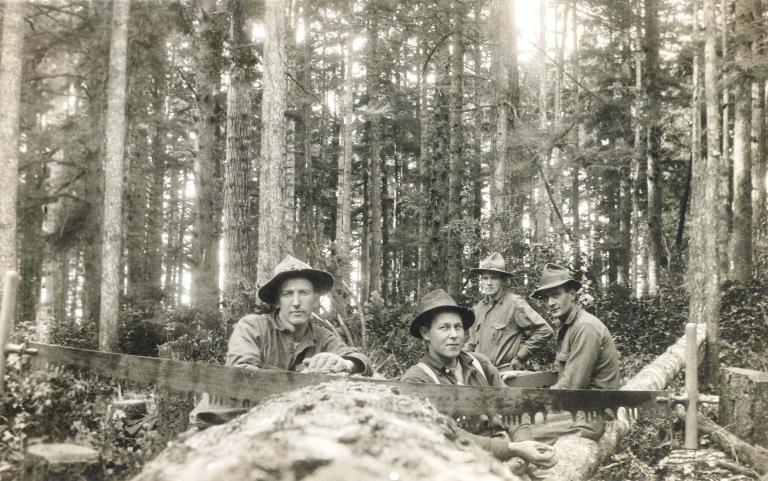|
You are viewing ARCHIVED content published online before January 20, 2025.
Please note that this content is NOT UPDATED, and links may not work. For current information,
visit https://www.nps.gov/aboutus/news/index.htm.

NPS PHOTO
Contact: Bob Cromwell, (360) 816-6253 The National Park Service will host "Making the Cut," a special commemoration of the start of World War I, at 5:30 PM on July 24 at Pearson Air Museum. This event will feature family-friendly activities, refreshments, and World War I-era music provided live by the Vancouver Community Concert Band under the direction of James Rourk. On exhibit at the museum will be "Straight Grained Soldiers," an exhibit recounting the history of the Spruce Production Division at Vancouver Barracks. National Park Service rangers will interpret the new exhibit in relationship to the First World War, and the air war that raged over Europe. For this one evening, artifacts related to the overseas war in the trenches will also be on display. "Although World War I was highly mechanized and relied upon quick technological advances on the battlefield, little attention has been paid by historians to the home front efforts, such as the Spruce Production Division, that allowed the Allies to overwhelm Germany at the end of the war," said Fort Vancouver National Historic Site Archaeologist Dr. Bob Cromwell. "The 'Straight Grained Soldiers' exhibit tells the story of the soldiers who dedicated themselves to winning the war by producing aviation-grade lumber to manufacture the latest generation of war planes in Britain and France." At 7:00 PM, as part of our annual Public Archaeology Speaker Series, Dr. Gerald Williams, a retired US Forest Service Chief Historian, will provide a talk on the history of the Northwest during World War I, and the region's contributions to the war effort through the Spruce Production Division. World War I began on July 28, 1914, as a global conflict between the Allied Powers (France, Britain, and Russia) and the Central Powers (Germany, Austria-Hungary, and the Ottoman Empire). In 1917, the United States entered the war on the side of the Allies. The war lasted until November 1918. Over the course of four years of fighting, new technologies were introduced to the battlefield, including tanks, automatic weapons, chemical weapons, and aircraft. On the home front in Vancouver, Washington, the Army played an essential part in the United States' contribution to the war. The Spruce Production Division (SPD), founded in 1917, was responsible for the production of aviation-grade Sitka spruce lumber used by the Allies to build aircraft. The SPD built logging camps throughout the Pacific Northwest, and established a massive Spruce Mill on the plain where Fort Vancouver National Historic Site and Pearson Air Museum now sit. By the war's end, lumber logged by the SPD had been used to build thousands of American, French, British, and Italian airplanes. National Park Service Archaeologist Dr. Doug Wilson said, "World War I was a time of profound transition that changed the fate of nations, including the United States. The Pacific Northwest had an important role in the conflict through its citizens, its timber and its shipbuilding resources. This event brings this unique story of people, technology, and aviation to help commemorate the 100th anniversary of the start of the Great War." What: "Making the Cut," a commemoration of World War I. When: Thursday, July 24th. Doors open at 5:30 PM. "World War I in the Pacific Northwest," talk by Dr. Gerald Williams begins at 7:00 PM. Where: Pearson Air Museum, 1115 E Fifth Street, Vancouver, WA 98661 Cost: Free |
Last updated: February 28, 2015
